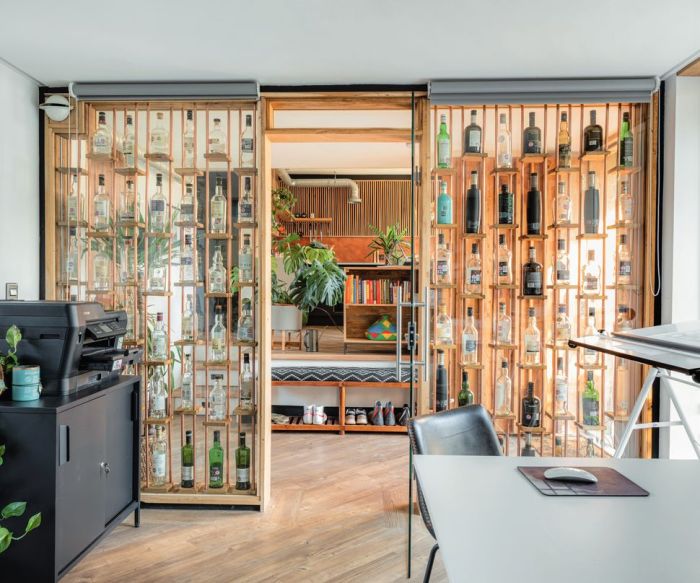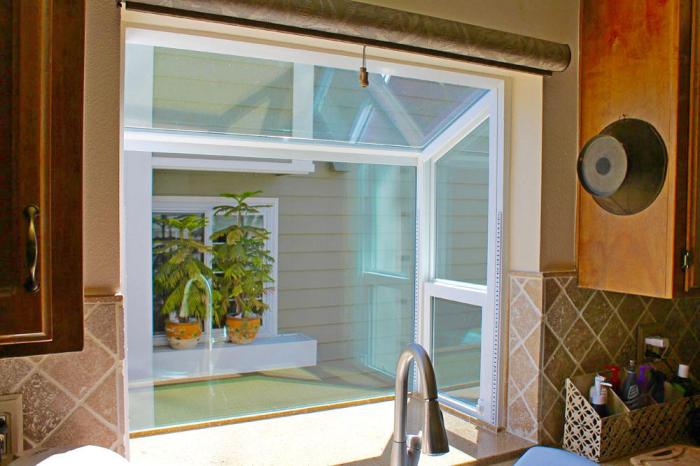Exploring the World of Internal Windows

Embark on a journey into the realm of internal windows, where architecture and design harmoniously merge to create spaces that are both functional and aesthetically pleasing. From the purpose they serve to their impact on the overall design, internal windows play a crucial role in shaping the ambiance of a building.
As we delve deeper, we uncover the materials, design considerations, and maintenance aspects that make internal windows an essential element in modern construction and interior design.
Introduction to Internal Windows
Internal windows, in the context of architecture and interior design, refer to windows that are used within a building to separate different spaces while allowing light to pass through. These windows are typically located within the interior of a building rather than on its external facade.
The purpose of internal windows in a building is to create visual connections between different areas, allowing natural light to flow through and enhancing the sense of openness and connectivity within the space. They also serve as design elements that can add visual interest and architectural detail to a room.
Types of Internal Windows
- Fixed Internal Windows: These windows cannot be opened or closed, and are often used to separate spaces while maintaining a visual connection.
- Sliding Internal Windows: These windows can be opened and closed by sliding horizontally or vertically, offering flexibility in terms of ventilation and accessibility between spaces.
- Clerestory Windows: Positioned high on a wall near the ceiling, these windows allow natural light to enter a space without compromising privacy.
Contribution to Design and Functionality
Internal windows play a crucial role in the overall design and functionality of a space by:
- Enhancing natural light distribution and reducing the need for artificial lighting during the day.
- Creating visual connections between rooms, making spaces feel larger and more interconnected.
- Improving air circulation and ventilation within a building when operable windows are used.
Materials and Construction of Internal Windows

When it comes to internal windows, the choice of materials and construction plays a crucial role in both the functionality and aesthetics of the window. Let's explore the common materials used for internal window frames, the different types of glass, and the construction process involved.
Internal Window Frame Materials
Internal window frames can be made from a variety of materials, each with its own set of characteristics and benefits:
- Wood: Wood frames provide a classic look and can be easily customized with different finishes. However, they may require more maintenance to prevent warping or rotting.
- Aluminum: Aluminum frames are lightweight, durable, and low-maintenance. They are also resistant to corrosion, making them ideal for humid environments.
- uPVC: uPVC frames are known for their energy efficiency and durability. They are also low-maintenance and offer good insulation properties.
- Composite: Composite frames combine the benefits of different materials, such as wood and aluminum, to create a strong and versatile option.
Types of Glass for Internal Windows
There are several types of glass used in internal windows, each with unique properties:
- Float Glass: Standard clear glass that is uniform in thickness and appearance.
- Tempered Glass: Heat-treated glass that is stronger and safer, as it shatters into small, blunt pieces when broken.
- Laminated Glass: Consists of two or more layers with a clear plastic interlayer, providing added security and sound insulation.
- Low-E Glass: Low-emissivity glass that helps control heat transfer and improve energy efficiency.
Construction of Internal Windows
The process of installing internal windows involves several steps:
- Measurement and Preparation: Accurate measurements are taken to ensure a proper fit, and any existing window components are removed.
- Frame Installation: The frame is secured in place, ensuring it is level and square for proper operation.
- Glass Insertion: The glass is carefully placed into the frame, ensuring a snug fit and proper sealing to prevent drafts.
- Finishing Touches: Trim and hardware are added to complete the look and functionality of the window.
Durability and Maintenance
When it comes to durability and maintenance, different materials have varying requirements:
- Wood frames may require regular painting or sealing to prevent deterioration.
- Aluminum frames are durable and low-maintenance, requiring occasional cleaning to remove dirt and debris.
- uPVC frames are easy to clean and resistant to moisture, making them a low-maintenance option.
- Composite frames offer a balance of durability and low maintenance, depending on the materials used in the construction.
Design Considerations for Internal Windows
Natural Light Utilization:Internal windows are strategically placed to allow natural light to penetrate deep into the building, reducing the need for artificial lighting during the day. This not only saves energy but also creates a more pleasant and inviting indoor environment.Privacy Concerns and Solutions:Privacy is a crucial consideration when incorporating internal windows in architectural design.
Frosted glass, curtains, blinds, or strategically placed partitions can be used to maintain privacy while still allowing light to filter through.Impact on Energy Efficiency:Internal windows play a significant role in the energy efficiency of a building. Properly positioned windows can help regulate temperature, reduce the need for heating or cooling, and lower energy consumption, ultimately leading to cost savings and a smaller carbon footprint.Examples of Innovative Designs:Innovative designs often incorporate internal windows in unique ways to enhance the aesthetic appeal and functionality of a space.
For instance, using internal windows as partitions in open-plan offices, creating light wells to bring natural light into lower levels of a building, or utilizing skylights in residential homes for a brighter and more spacious feel.
Maintenance and Care of Internal Windows
Proper maintenance and care of internal windows are essential to ensure their longevity and functionality. By following best practices for cleaning and upkeep, you can extend the lifespan of your windows and prevent common issues from arising.
Cleaning Internal Windows
Regular cleaning of internal windows is crucial to maintain their appearance and clarity. Here are some tips for effective window cleaning:
- Use a mild detergent or a vinegar solution to clean the glass surfaces.
- Avoid using abrasive cleaners or materials that may scratch the glass.
- Wipe the windows with a soft, lint-free cloth or squeegee for a streak-free finish.
- Pay attention to the window frames and tracks, cleaning them with a damp cloth to remove dirt and debris.
Maintaining Window Hardware
Internal windows often come with various hardware components that need regular maintenance to ensure smooth operation. Follow these steps to maintain the functionality of window hardware:
- Check and lubricate hinges, locks, and handles periodically to prevent stiffness or rust.
- Tighten any loose screws or bolts to keep the hardware secure.
- Inspect and replace any damaged or worn-out hardware to avoid issues with opening and closing the windows.
Common Issues and Troubleshooting
Despite proper care, internal windows may encounter common issues that require troubleshooting. Here are some common problems and how to address them:
- If the window is difficult to open or close, check for any obstructions in the tracks and clean them thoroughly.
- In case of condensation between the window panes, it may indicate a broken seal that needs to be repaired or replaced by professionals.
- For drafty windows, consider applying weatherstripping or caulking to improve insulation and energy efficiency.
Extending Lifespan through Care
By following a regular maintenance routine and addressing issues promptly, you can extend the lifespan of your internal windows. Here are some additional tips for proper care:
- Avoid slamming or forcefully handling the windows to prevent damage to the glass or hardware.
- Keep the windows clean and free from debris to prevent scratches and deterioration.
- Consider applying a protective coating to the glass to reduce the buildup of dirt and grime over time.
Conclusion
In conclusion, internal windows stand as silent yet significant contributors to the functionality and appeal of a space. Their ability to balance light, privacy, and energy efficiency makes them indispensable in architectural marvels. As you gaze through an internal window, remember the intricate details and thoughtful designs that went into creating this seamless blend of form and function.
Key Questions Answered
What are the common materials used for internal window frames?
Internal window frames are commonly made from materials like wood, aluminum, or uPVC.
How can natural light be utilized through internal windows in architectural design?
Natural light can be maximized by strategically placing internal windows to allow sunlight to filter into different areas of a building.
What are the best practices for cleaning internal windows?
Use a mild cleaning solution and a soft cloth to avoid damaging the glass or frame while cleaning internal windows.
How can one troubleshoot common issues that may arise with internal windows?
Common issues like condensation or drafts can be addressed by checking for gaps in the window seals and ensuring proper insulation.
How do internal windows impact energy efficiency in a building?
Well-designed internal windows can help reduce the need for artificial lighting during the day, thus saving energy and lowering utility costs.

